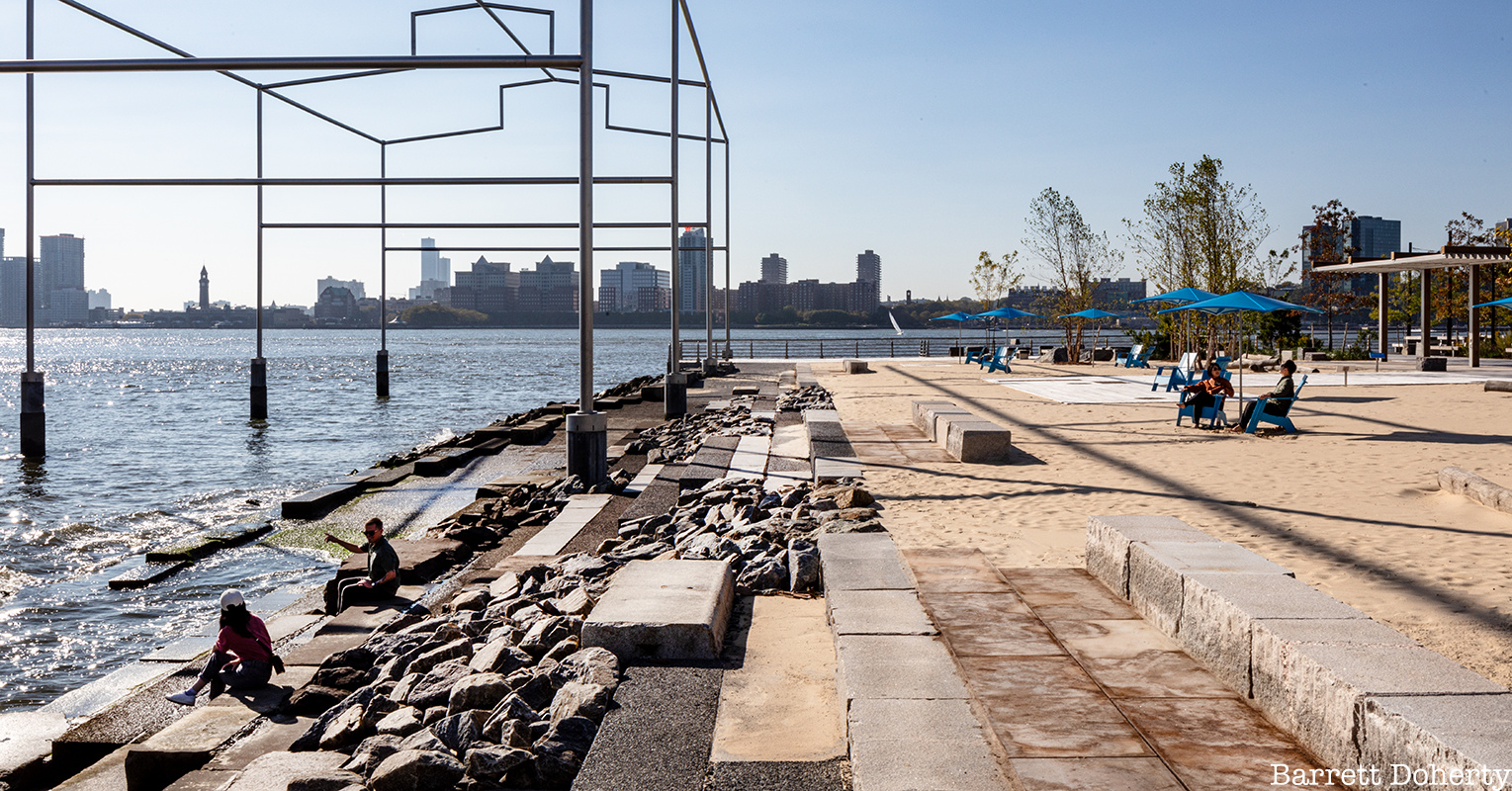Manhattanites no longer need to hop on a train or drive to get to the beach. Gansevoort Peninsula, a new 5.5 acre oasis in Hudson River Park, now provides New Yorkers with sandy waterfront access to the Hudson River in Manhattan. The $73 million park designed by Field Operations sits on land with a rich history, including a piece of Manhattan’s lost 13th Avenue.
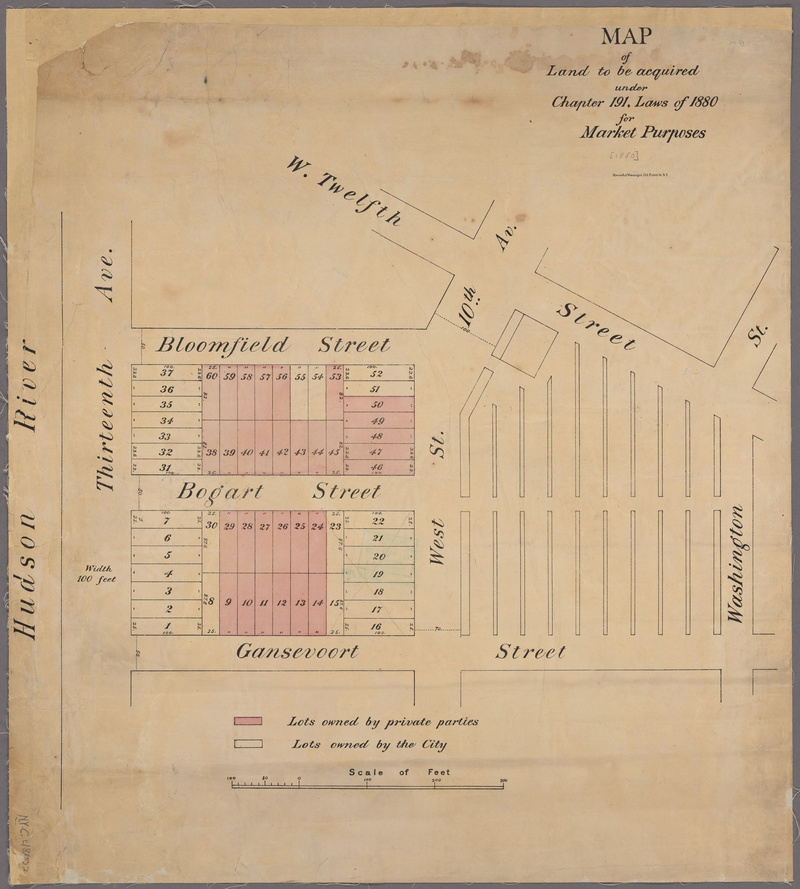
At its longest, 13th Avenue ran from Bloomfield Street all the way up to 23rd Street. It was originally built atop landfill in the 1830s as an access road to the shipping piers, ferry terminals, and dumping grounds along the river, according to Ephemeral New York. In 1886, the New York Times called 13th Ave “a strange thoroughfare,” and “one of the city’s little known streets.” The reporter goes on to describe it as “crude and unmade.”
As large, luxury ocean liners like RMS Titanic became popular in the late 1800s, longer and wider docks where needed along the Manhattan coastline. To accommodate the larger docks, most of 13th Avenue was excavated. Only a small stretch of the street near its southern terminus was left. A remnant of the White Star Line dock can still be seen today at the southern entrance to Little Island.
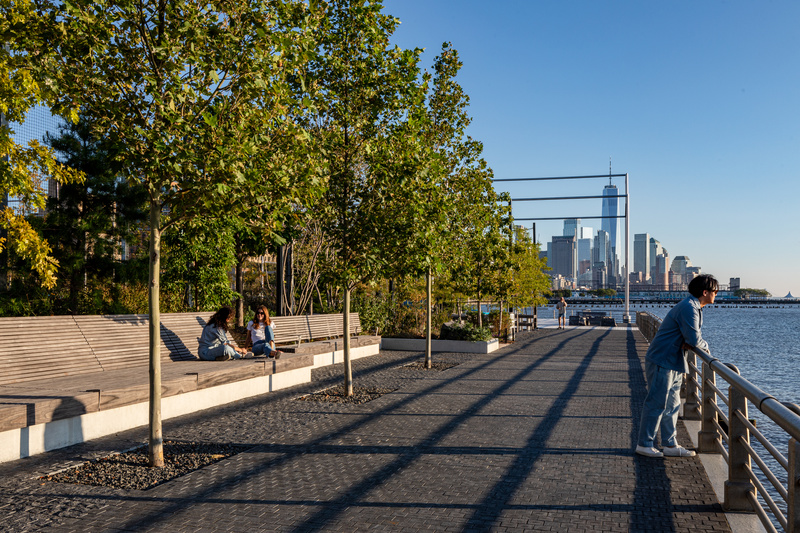
The leftover piece of landfill from 13th Avenue became known as the Gansvoort Peninsula. For many years it was the site of a Department of Sanitation facility. Today, the new park’s western esplanade is where 13th Avenue was once located.
Another nod to the park’s history can be found in the massive public art installation on view. Titled Day’s End, the sculpture by David Hammons (b. 1943) takes its shape and size from a pier shed that once stood in the same spot atop the demolished Pier 52. It is named for an earlier work of art by the late Gordon Matta-Clark. In 1975, Matta-Clark took cuttings out of the actual abandoned pier shed at Pier 52 to turn it into a living sculpture that allowed light to pass through. The pier was demolished in 1979, a year after Matta-Clark’s death. The new Day’s End was donated by The Whitney.
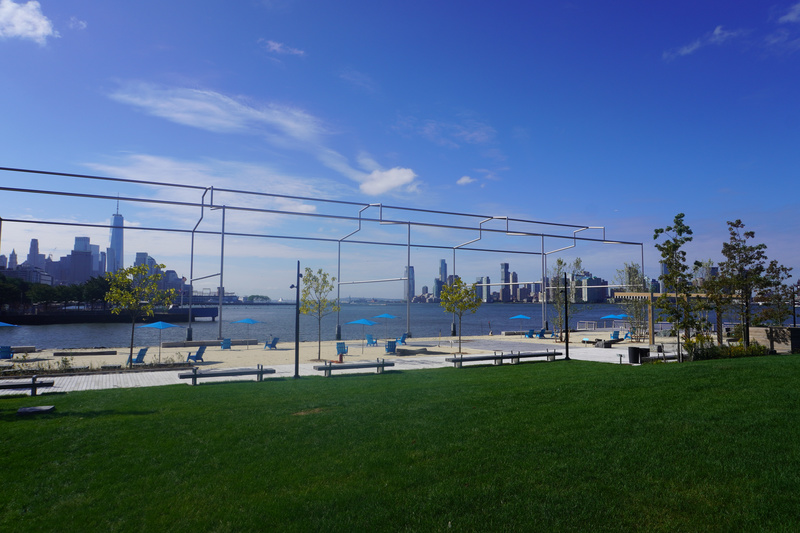
Staying true to Hudson River Park’s commitment to improving the river and its marine habitats, the park contains a salt marsh. The first of its kind on the Manhattan side of the Hudson River, this marsh has native grasses and plantings. In the water, oyster gabions have been seeded with 20 million juvenile oysters. Oysters were once of staple of the New York diet for native Lenape people, European colonists, and 19th century New Yorkers before the oyster population was severely diminisehd due to over-harvesting and the expansion of Manhttan’s shoreline.
1,200 tons of sand were brought in to create the riverside beach where New Yorkers can sunbathe and relax. This beach is not for swimming, but it does serve as a launch for kayaks and other non-motorized water vehicles. Beach umbrellas, Adirondack-style chairs, and a misting feature are available for those who choose to lounge. New York City is no stranger to man-made beaches, you can discover more here!
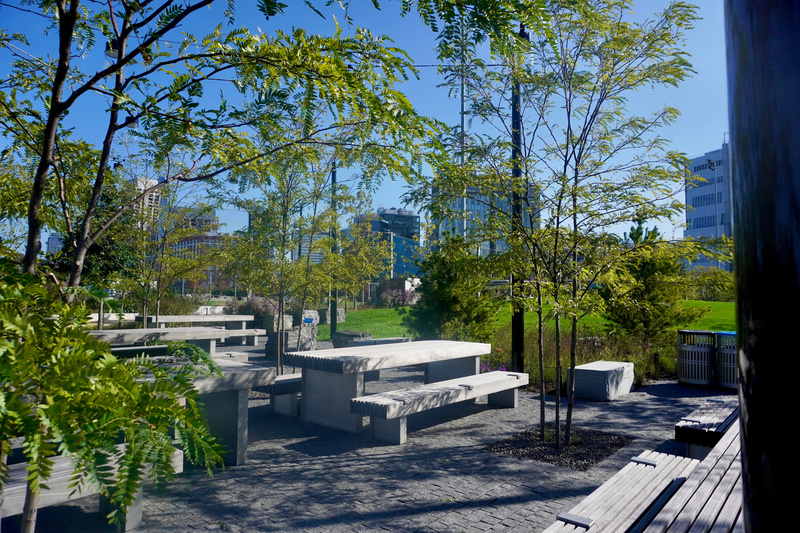
Being built on landfill sets this new park apart from most of the other recreational areas along Manhattan’s edge which have been largely built on piers. This unique feature allowed the new park to be wider than most riverside parks, allowing for large sports fields and more. In addition to the water access, Gansevoort Peninsula also offers a boardwalks, promenades, a large seating lawn, a picnic area, and two dog runs. A new building designed by nARCHITECTS will include public restrooms, a concession stand, and a small area to support Park maintenance needs. All of these amenities are further enhanced by the stunning river views!
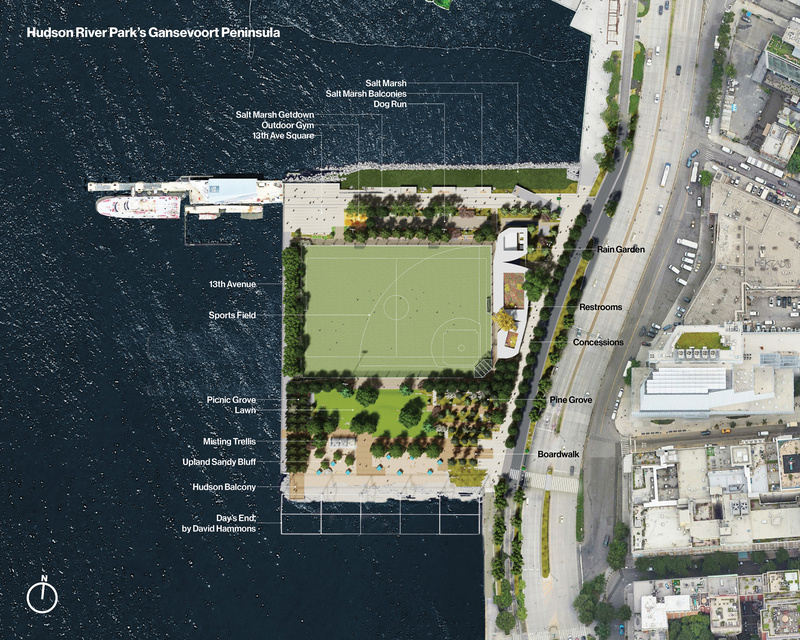
The opening of Gansevoort Peninsula Park comes as Hudson River Park is celebrating its 25th anniversary! The next major projects set to be completed along the river are Pier 97 (the park’s northnermost pier) and the Pier 26 Science Playground.
Next, check out 10 Hidden Beaches of NYC






